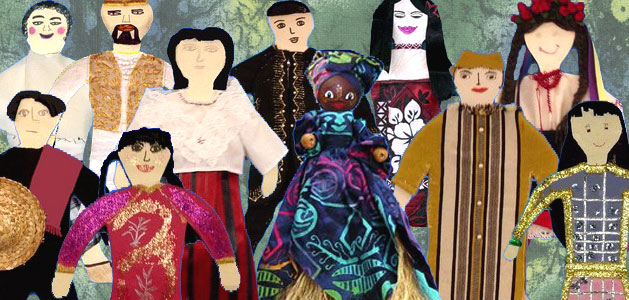
Activities for the modern classroom

In today’s complex and global world, it is essential that our students grow to tolerate and even embrace diversity. Students today will meet, and likely work alongside, people from a variety of cultures, backgrounds, ethnicities and religious beliefs. Their lives, and our communities, will be enriched if they accept these people as friends, neighbors and co-workers.
To support student’s growth in this area, begin explicitly teaching diversity to your young learners. Explicitly teaching diversity makes students more tolerant, open minded, empathetic and kind. In the classroom, it creates an environment where all the students have the opportunity to learn while also respecting one another.
Here are two classroom activities you can use to introduce diversity to young learners.
As children grow, they look to the people immediately around them to tell them what the world is like. Their drawings and artwork most often reflect the people and places they have seen and experienced firsthand. One way to expose your students to diverse cultures is to have them craft paper dolls that don’t look or dress like their friends and family. Here’s how:
In the classroom, and on the playground, students will often stick with the peer group of students with which they’re most comfortable. This group might consist of students they know from an earlier grade or students with similar interests.
To help them discover the diversity in your classroom and school, and learn that different or unknown can be good, encourage them to take part in group activities with some of the students they wouldn’t socialize with normally. The next time you have an activity that students will complete in pairs, ask them to find a partner that they have not worked with before.
While you may have to monitor student choices, you can encourage them by praising students who choose a wide range of partners. If you have a series of short activities and haven’t chosen specific learning teams for them, challenge students to find a new partner each time or give a shout-out to the group that finds the most new team members.
Right in your classroom, your students may already be meeting other children from different backgrounds. Even if most of them come from similar backgrounds, they all have differing academic, social and athletic abilities — and unique personalities. That’s the definition of diversity!

Follow us on Instagram for daily inspiration

Create a thought web, cluster, flowchart, or other graphic organizer for a lesson
8 first projects to get students using technology
Creative, digital book reviews
Fun and powerful ideas with animated characters

Wixie
Share your ideas, imagination, and understanding through writing, art, voice, and video.

Rubric Maker
Create custom rubrics for your classroom.

Pics4Learning
A curated, copyright-friendly image library that is safe and free for education.

Wriddle
Write, record, and illustrate a sentence.

Get creative classroom ideas delivered straight to your inbox once a month.
Topics